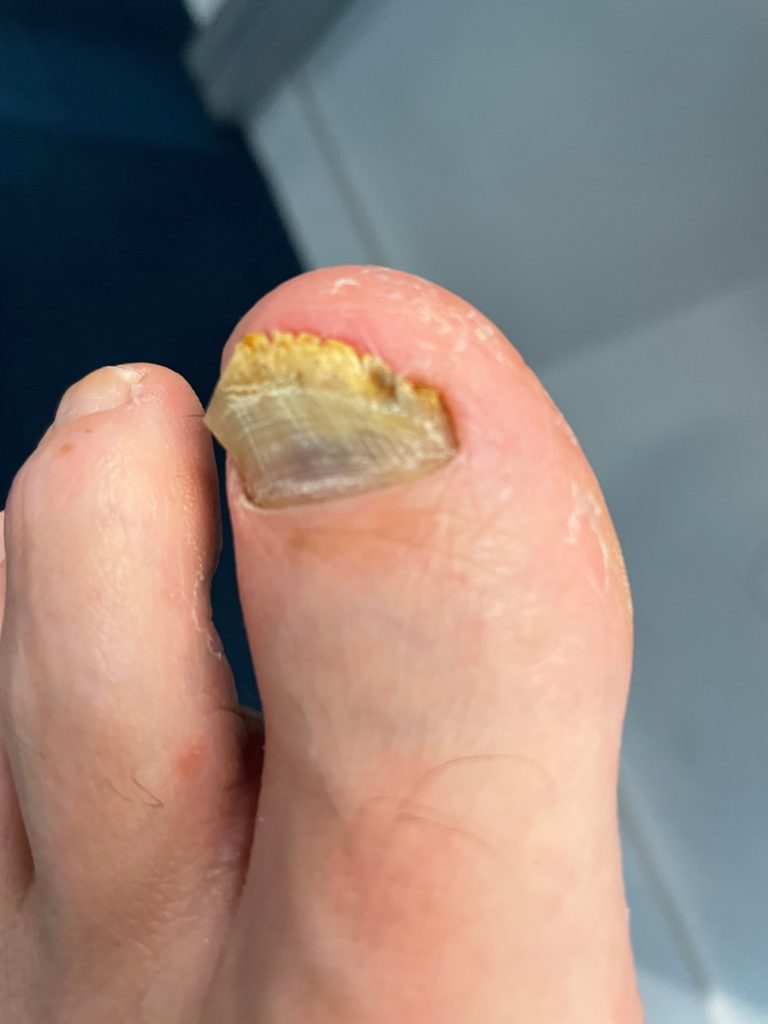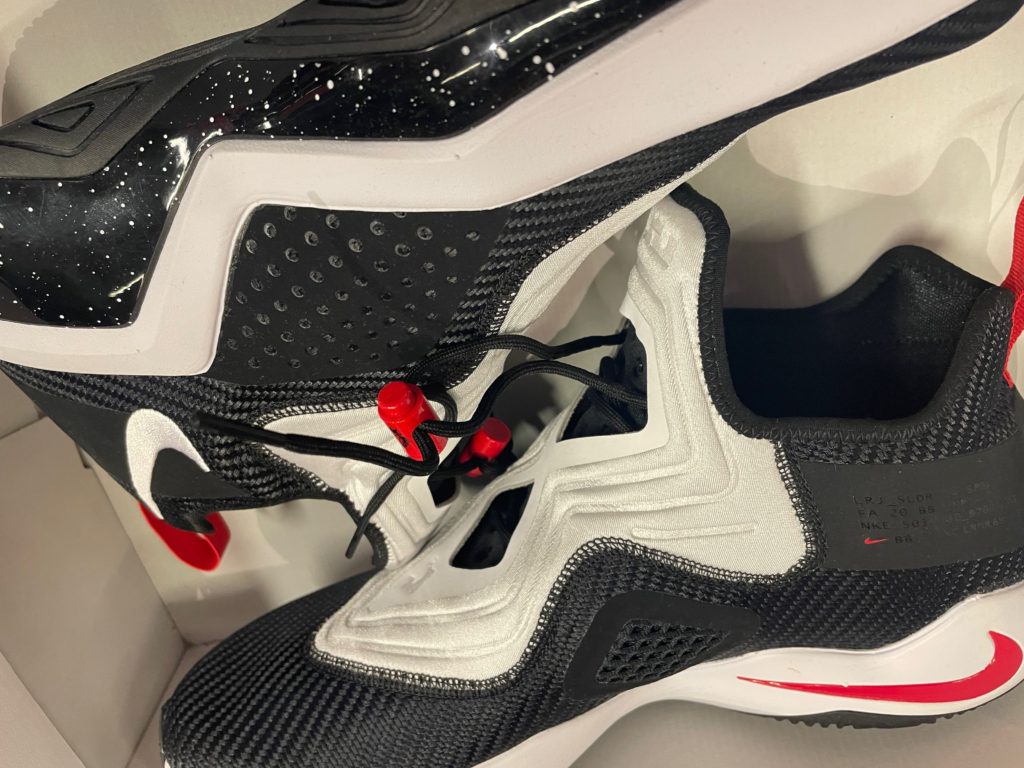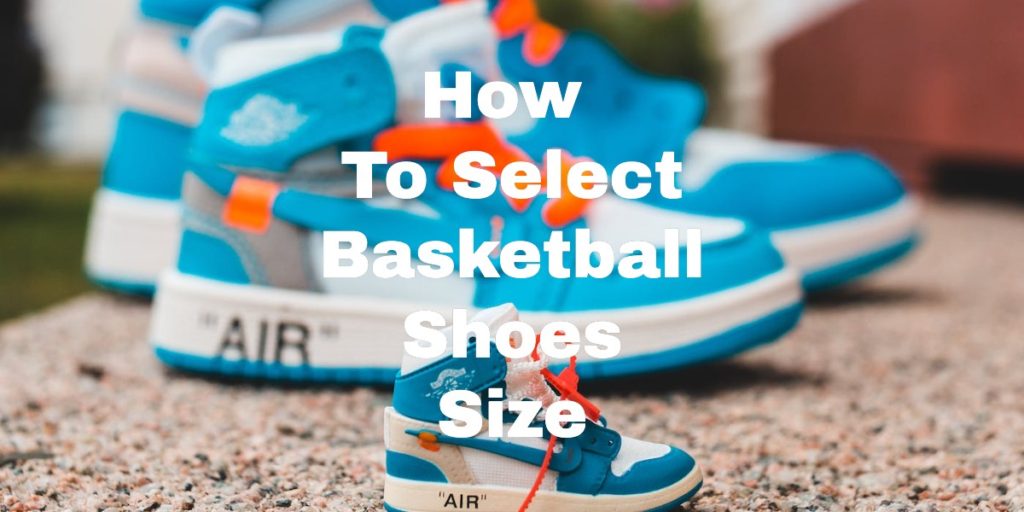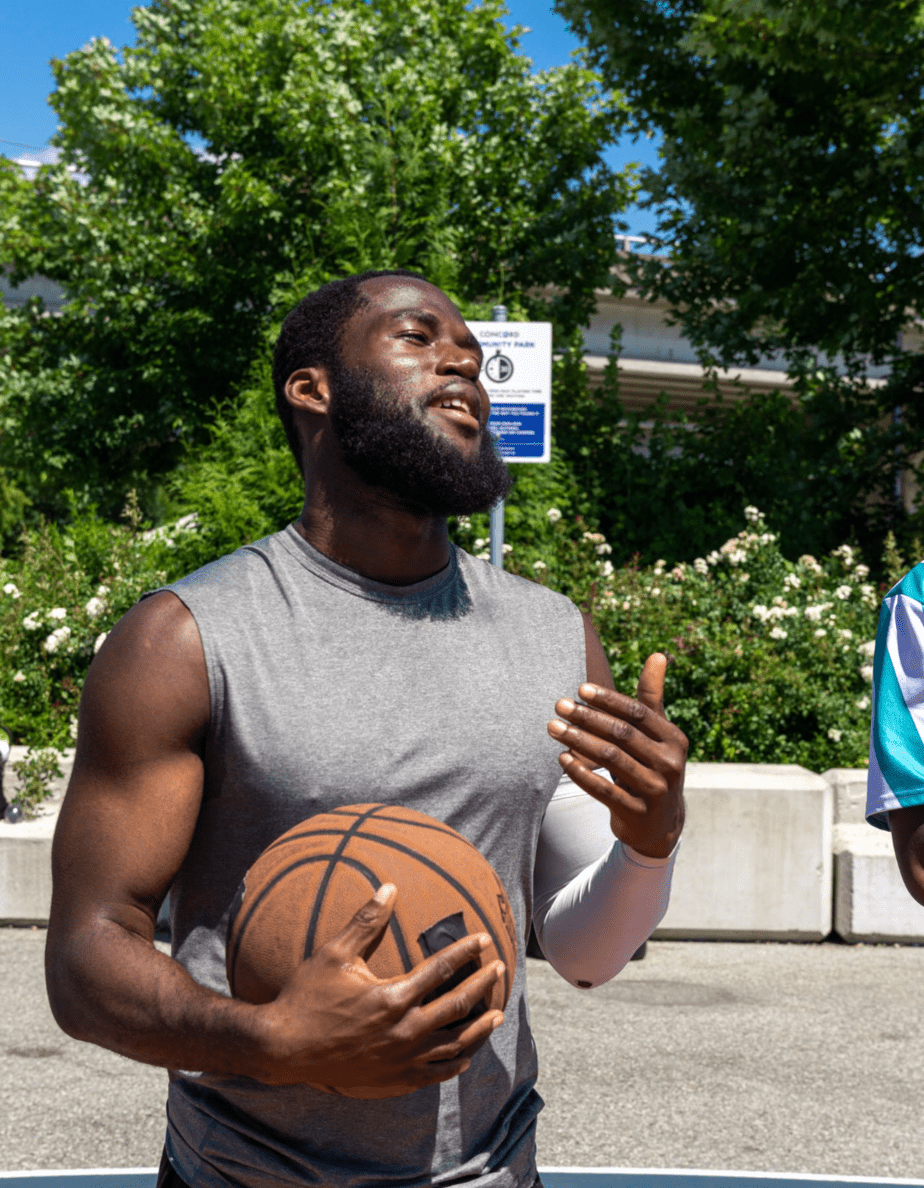How to Select the Perfect Basketball Shoes Size: A Comprehensive Guide
As a basketball player, I know how important it is to have the right shoes. The right fit can make all the difference between playing at your best or ending up on the bench with a foot injury. As proof, the picture below is what a toe looks like when you wear basketball shoes that are too small (and smashed by large men on the basketball court over the years). That’s why I created this comprehensive guide on how to select the perfect basketball shoe size.

You may think of a basketball shoe size as just the numeric size that corresponds to how long your foot is but there are several other factors that come into play.
- Foot Size (length)
- Foot Type
- Basketball Shoe Design
Plus I add a few tips on what to do once you find the right pair of basketball shoes. One is find a way to deodorize your basketball shoes.
Measure Your Feet
First things first, let’s talk about measuring your feet. This may seem like a no-brainer, but you’d be surprised how many people skip this step. Your feet can change over time, and it’s crucial to get an accurate measurement before buying any new shoes. To measure your feet, you’ll need a measuring tape, a piece of paper, and a pen.
Start by tracing both of your feet on a piece of paper while standing. Measure the length of your feet from the tip of your longest toe to the heel. Then, measure the width of your feet from the widest part of your foot. Repeat this process for both feet and use the larger of the two measurements to determine your shoe size. If you forget to do this before you go to your local Dick’s Sporting Goods they should have a shoe measurement scale you can use.
Know Your Foot Type
Now that you have your measurements, it’s time to determine your foot type. There are three primary foot types: flat, neutral, and high arch. Knowing your foot type is essential because it can impact the type of shoe you need for optimal performance and comfort.
If you have flat feet, your arches are low or nonexistent, and your feet tend to roll inward. This can cause pain and discomfort during physical activity. Look for shoes with good arch support to help stabilize your feet and prevent injuries.
I have a high instep. Having a high instep means that the arch of your foot is higher than average. This limits the basketball shoes that work for me. I tried these Nike Lebron Soldier XIV in a size 13 on at the Nike Outlet store in Las Vegas. They didn’t have traditional laces to loosen. Almost like a slip on and those types of shoes don’t tend to work well with a high instep and these were no different.

If you have neutral feet, your feet are well-balanced, and your arches are neither too high nor too low. Lucky you! You can wear a variety of shoes, but it’s still essential to find the right fit for your feet.
If you have high arches, your feet tend to roll outward, which can put extra pressure on your heels and the balls of your feet. Look for shoes with extra cushioning to help absorb shock and provide extra support. I wear additional basketball insoles with my shoes.
In this video, Dr. Zach Thomas, a board-certified Podiatrist and Foot and Ankle Surgeon, give you tips on understanding our next subject of sizing your basketball shoes.
Understanding Basketball Shoe Sizes
Understanding shoe sizes is the next step. Keep in mind that basketball shoe sizes can differ from regular sneaker sizes, so make sure you’re checking the right size chart. If you’re buying shoes online, take a look at the size chart and make sure you know how to convert shoe sizes.
When trying on shoes, make sure to wear the same socks you plan to wear while playing basketball. Another trick is to try on shoes at the end of the day when your feet are at their largest. When you’re trying on shoes, walk around, jump, and do some quick movements to test the shoes’ fit and comfort.
If you’re buying shoes online, make sure to read reviews from other customers to get an idea of how the shoes fit. Also, keep in mind that some brands may fit differently than others.
Here’s a basketball shoe sizing chart you can use as a reference:
| US Size | Euro Size | UK Size | Foot Length (inches) | Foot Length (cm) |
|---|---|---|---|---|
| 6 | 39 | 5.5 | 9.25 | 23.5 |
| 6.5 | 39.5 | 6 | 9.5 | 24.1 |
| 7 | 40 | 6.5 | 9.625 | 24.4 |
| 7.5 | 40.5 | 7 | 9.75 | 24.8 |
| 8 | 41 | 7.5 | 9.9375 | 25.4 |
| 8.5 | 42 | 8 | 10.125 | 25.7 |
| 9 | 42.5 | 8.5 | 10.25 | 26.0 |
| 9.5 | 43 | 9 | 10.4375 | 26.7 |
| 10 | 44 | 9.5 | 10.5625 | 27.0 |
| 10.5 | 44.5 | 10 | 10.75 | 27.3 |
| 11 | 45 | 10.5 | 10.9375 | 27.9 |
| 11.5 | 45.5 | 11 | 11.125 | 28.3 |
| 12 | 46 | 11.5 | 11.25 | 28.6 |
| 12.5 | 47 | 12 | 11.5625 | 29.4 |
| 13 | 47.5 | 12.5 | 11.875 | 30.2 |
| 14 | 48.5 | 13.5 | 12.1875 | 31.0 |
| 15 | 49.5 | 14.5 | 12.5 | 31.8 |
Keep in mind that this is just a general guide, and different brands may have slightly different sizing. Always check the size chart provided by the manufacturer before making a purchase.
Consider the Basketball Shoes Design
When considering the design of basketball shoes, think about the type of shoe that works best for you. High-top shoes provide extra ankle support and stability, making them a popular choice for basketball players. Mid-top shoes are lighter and more flexible, but they still provide some ankle support. Low-top shoes are the lightest and most flexible, but they don’t provide much ankle support.
The weight of your shoes can also affect your performance. Lighter shoes are generally better for speed and quick movements, while heavier shoes provide more stability and support.
Try Them On
Once you’ve determined your size and considered your foot type and the shoe’s design, it’s time to try on some basketball shoes. Here are some tips for ensuring a comfortable fit:
- Bring your own socks: Make sure to bring the socks you plan to wear while playing basketball, as they can impact the fit of the shoes.
- Try them on later in the day: Your feet tend to swell throughout the day, so try on shoes in the afternoon or evening when your feet are at their largest.
- Walk and jog around: Don’t just stand still in your shoes. Walk around the store and even jog a few steps to get a feel for how they’ll perform on the court.
- Make sure there’s enough room: There should be about a half-inch of space between your toes and the front of the shoe. This allows for proper movement and circulation in the foot.
- Check for support: Make sure the shoe offers enough support for your foot type, whether you have flat feet, neutral feet, or high arches.
- Trust your gut: If a shoe doesn’t feel comfortable or supportive, it’s not the right fit for you. Don’t settle for a shoe just because it looks good or has good reviews.
Remember, finding the right basketball shoe size can impact your performance on the court and prevent injuries. Don’t rush the process and make sure to try on multiple pairs before making a decision.
Break Them In
Once you’ve found the perfect pair of basketball shoes, it’s essential to break them in before wearing them on the court. This can help prevent blisters and discomfort during games. Start by wearing your new shoes around the house for short periods. Then, wear them for short periods while doing some light activity before using them in a game.
To avoid blisters or other foot injuries don’t wear new shoes for a long time right away or switch to a new pair of shoes right before an important game. Take the time to break in your shoes properly and get used to them before playing.
Conclusion
Finding the perfect basketball shoe size can be a process, but you will be rewarded with comfort, support, and injury prevention by taking the time. Remember to measure your feet, determine your foot type, understand shoe sizes, consider the basketball shoe design, and try them on before making a purchase.
In summary, we hope this post has given you all the tools necessary on how to select basketball shoes size that help you to play safely and comfortably. We didn’t cover individual shoe brands in this post, but this post on Nike Air basketball shoes gives a good primer on Nike technology.
Frequently Asked Questions
How do I measure my feet for basketball shoe size?
To measure your feet for basketball shoe size, place a piece of paper on the floor and stand on it with your heel against a wall. Trace the outline of your foot and measure the length from the heel to the longest toe. Use this measurement to find your size in the brand’s size chart.
What should I consider when selecting a basketball shoe size?
When selecting a basketball shoe size, consider your foot type, the shoe’s design, and the brand’s sizing system. It’s also important to try the shoes on and ensure a comfortable fit with room for your toes to wiggle.
Can I wear my regular shoe size for basketball shoes?
Your regular shoe size may not be the same as your basketball shoe size. It’s important to measure your feet and try on basketball shoes to find the right fit for optimal performance and injury prevention.
What should I do if I have wide feet?
If you have wide feet, look for basketball shoes with a wider toe box and consider going up a half size to ensure a comfortable fit. Some brands also offer shoes specifically designed for wider feet.
Do I need to break in my basketball shoes?
Yes, it’s important to break in your basketball shoes before wearing them on the court. This can help prevent blisters and discomfort during games. Start by wearing them around the house for short periods, then wear them for short periods while doing some light activity before using them in a game.

Troy Wallace
Troy Wallace is Certified Basketball Speed Specialist and shares his experiences in trying to stay as healthy as possible to stay on the court. He is active in coaching youth basketball in YMCA, Team Work Sports Nebraska, and, currently, in the Jr. Warriors program in Omaha, NE. Visit Troy's Full Author Bio Page or email him directly.
Meaningful conversations happening daily about training, recovery, and injury-specific rehabilitation as well as sport-specific discussions on playing, coaching and refereeing your favorite sport. We welcome experts and those with curious minds seeking answers.
Join The Stay On The Court Community!